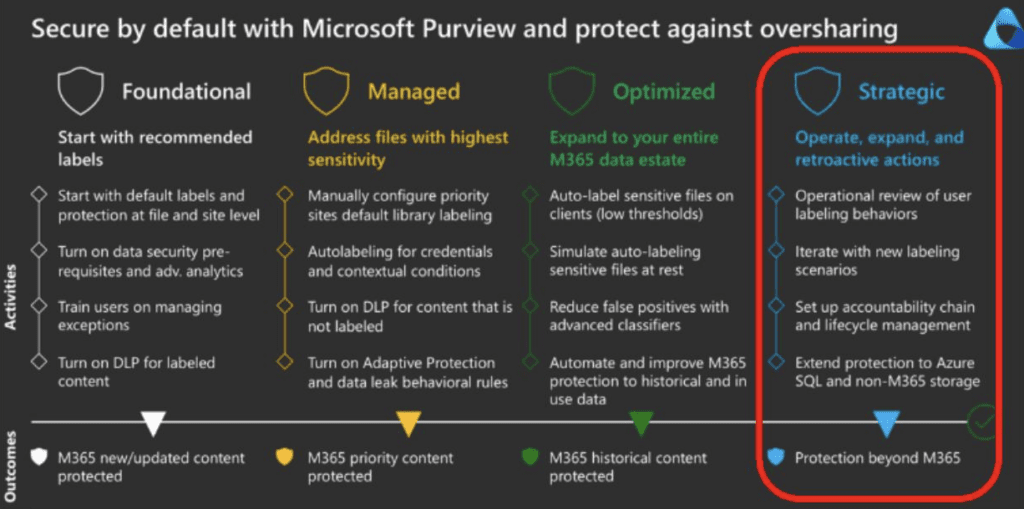This post continues our in-depth guide on Purview Secure by Default, focusing on the Strategic phase. Refine your Microsoft Purview deployment with Phase 4 of Secure by Default. Learn how to strengthen labeling, empower Site Owners, and extend protection beyond Microsoft 365.

Beyond the Basics– Expanding Protection Across Your Digital Estate
Now that your Microsoft 365 tenant is labeled, protected, and monitored by default, it’s time to evolve beyond foundational security. The Strategic phase of Microsoft’s Secure by Default framework is about fine-tuning controls, expanding protection to external systems, and engaging Site Owners in ongoing data governance.
Most of your data is now protected by default labels and DLP policies. In Phase 4, you’ll proactively identify gaps, address exceptions, and extend those protections beyond Microsoft 365.
What We’ve Covered So Far
In previous phases of Secure by Default, your organization accomplished the following:
- Phase 1 – Foundational: Default labels applied to new content
- Phase 2 – Managed: Manual labeling of high-priority content
- Phase 3 – Optimized: Automated labeling of historical and low-risk data
Now, Phase 4—Strategic—is about:
- Extending protection outside of Microsoft 365
- Reviewing gaps and inconsistencies
- Strengthening identity-based controls
- Engaging Site Owners for continuous oversight



Phase 4 Objectives: Strategic Data Protection at Scale
1 — Identify Labeling Gaps and Inconsistencies
Actions:
- Use SharePoint Advanced Management or Graph API to detect unlabeled Teams or SharePoint sites.
- Instruct Site Owners to apply appropriate labels.
- Create DLP policies to block under-labeled content from being shared (e.g., emails with PII but no encryption).
- Tune Insider Risk Management (IRM) and verify Adaptive Protection coverage.
Outcomes:
- Sites and libraries are consistently labeled and access-restricted.
- Under-labeled content is automatically blocked or flagged.
- IRM more accurately identifies at-risk user behavior.
2 — Expand Labeling Strategy for Special Use Cases
Actions:
- Publish unique labels for highly sensitive groups like M&A or legal projects.
- Update configurations to include external tenants or trusted domains.
- Adjust publishing policies to manage access by contractors or third parties.
Outcomes:
- Improved collaboration without compromising security.
- Short-term, sensitive projects are securely isolated.
- External user access is controlled, while internal-only data stays restricted.


3 — Engage Site Owners for Lifecycle and Oversharing Reviews
Actions:
- Ensure every site has a designated Site Owner.
- Delete inactive or abandoned sites.
- Use SharePoint oversharing reports to identify risk and notify owners.
- Implement Access Reviews to ensure proper user permissions.
Outcomes:
- Owners are accountable for labeling and access.
- Overshared and stale data are cleaned up.
- Lifecycle reviews prevent ungoverned data sprawl.
4. Extend Purview Protections Beyond M365
Actions:
- Use Purview Information Protection Scanner to label files on file servers or SharePoint Server.
- Set up Purview Data Catalog for Azure and Amazon S3.
- Apply existing label and protection policies to Azure Blob, Azure SQL, and S3 storage.
⚠️ Note: Extending Purview outside M365 requires additional licensing (Azure subscription fees may apply).
Outcomes:
- On-prem and multicloud data are protected using the same governance controls.
- Legacy servers and files receive sensitivity labels.
- Azure and S3 storage benefit from unified policy management.


Visual Summary: Strategic Phase Activities
| Strategic Action | Tools Used | Outcome |
|---|---|---|
| Detect label gaps | Graph API, SharePoint Reports | Enforced labeling consistency |
| Expand label scope | Label publishing, Sensitivity policy editor | Targeted protection for special use |
| Empower Site Owners | Oversharing reports, Access Reviews | Governance accountability |
| Extend protection | Purview Scanner, Data Catalog | Unified multicloud security |
- Congratulations, your organization is Secure by Default! You have established several more layers of data protection and can rest a bit easier knowing that your environment is now more secure. That said, the journey is not over….
Ongoing Governance Is Key to Long-Term Success
Good news– your organization is now Secure by Default, but this isn’t a finish line, it’s a milestone in your long-term data governance journey.
Your success with Purview Secure by Default depends on ongoing governance, stakeholder alignment, and scalable protection policies.
To sustain protection as your environment evolves:
- Appoint a data governance committee including legal, compliance, and business unit leaders.
- Regularly review labeling strategies, DLP policies, and new Purview features.
- Maintain a balance between security and collaboration by continuously adjusting policies.
Data governance is not one-size-fits-all—ongoing stakeholder input ensures Purview policies remain both effective and usable.


Next Steps: Strengthen Your Purview Strategy
eGroup helps organizations implement and optimize Microsoft Purview at all stages. If you’re ready to operationalize governance, eliminate oversharing risks, or expand data protection across cloud and on-prem, we’re here to help.



